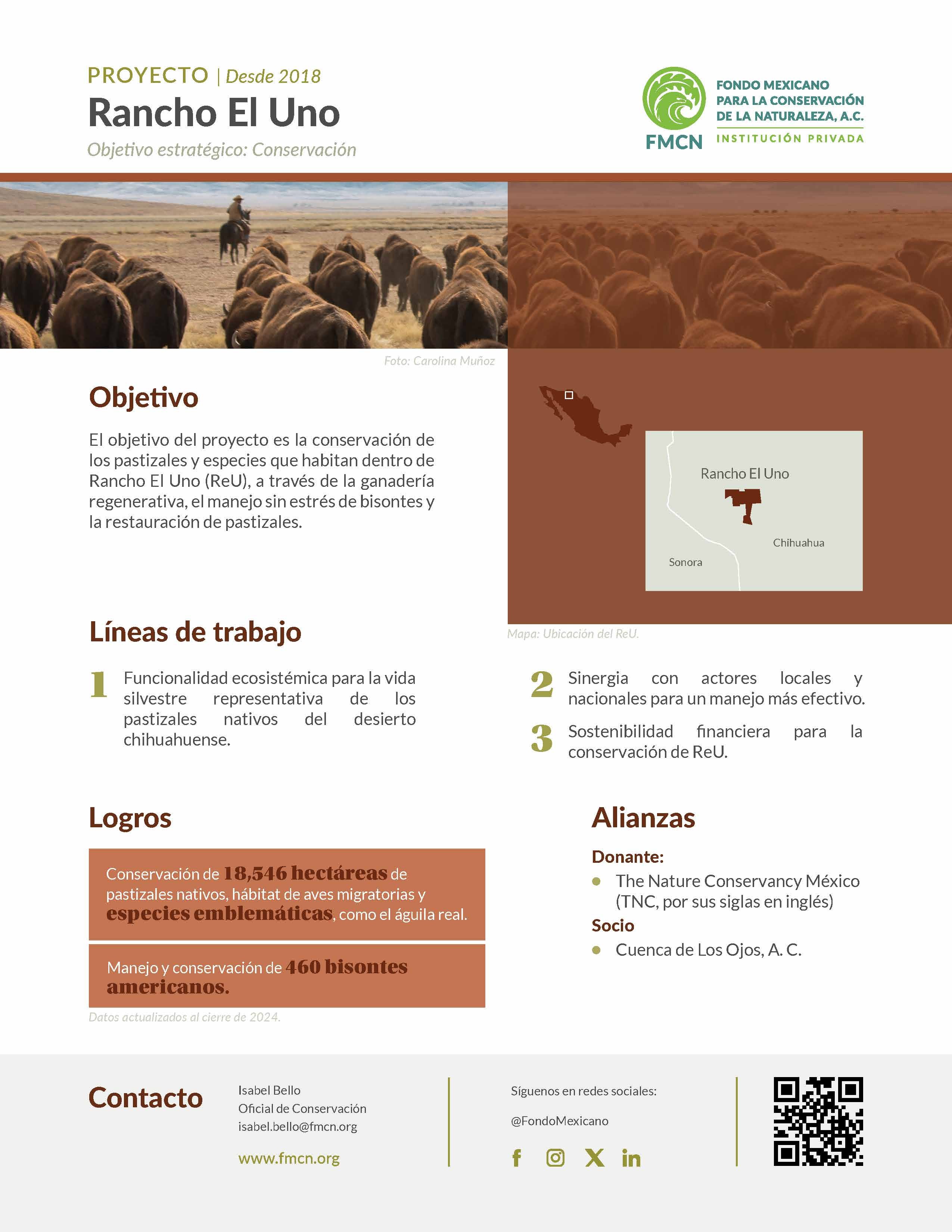Rancho El Uno
Conserving grasslands and species through regenerative ranching and grassland restoration
The Project
The project's objective is to conserve the grasslands and species that inhabit Rancho El Uno (ReU) through regenerative cattle ranching, low-stress bison handling, and grassland restoration.
Context
- Ecosystem functionality for wildlife representative of the native grasslands of the Chihuahuan Desert.
- Synergy with local and national stakeholders for more effective management.
- Financial sustainability for the conservation of ReU.
ReU represents one of the continent's most important sites for migratory birds and iconic species, such as the American bison, black-tailed prairie dog and golden eagle.
Achievements
ReU has a prescribed burning plan in place to reduce flammable material and regenerate oxidized grasslands. In addition to lowering the risk of wildfires, this activity helps expand prairie dog colonies and maintain habitat for migratory grassland bird species.
In 2024, CLO carried out preventive and corrective maintenance on roads and infrastructure, which are essential for bison management and monitoring activities. Nearly 90 calves were reported born, confirming the healthy growth of the herd. A more accurate count is expected during veterinary management efforts scheduled for early 2025.
That same year, CLO made progress in updating ReU’s Comprehensive Management Plan, which now includes a new Monitoring Master Plan. This document reflects a broader vision for the ranch as a site for environmental education, restoration, and the conservation of flora and fauna.
In coordination with the National Autonomous University of Mexico (UNAM, acronym in Spanish), 26 hectares were restored using the keyline design technique within the Báscula paddock.
Environmental education is a key pillar of the project. ReU continuously hosts students from primary and secondary levels, and CLO staff participate in ongoing training processes to strengthen their technical and field-based capacities.
